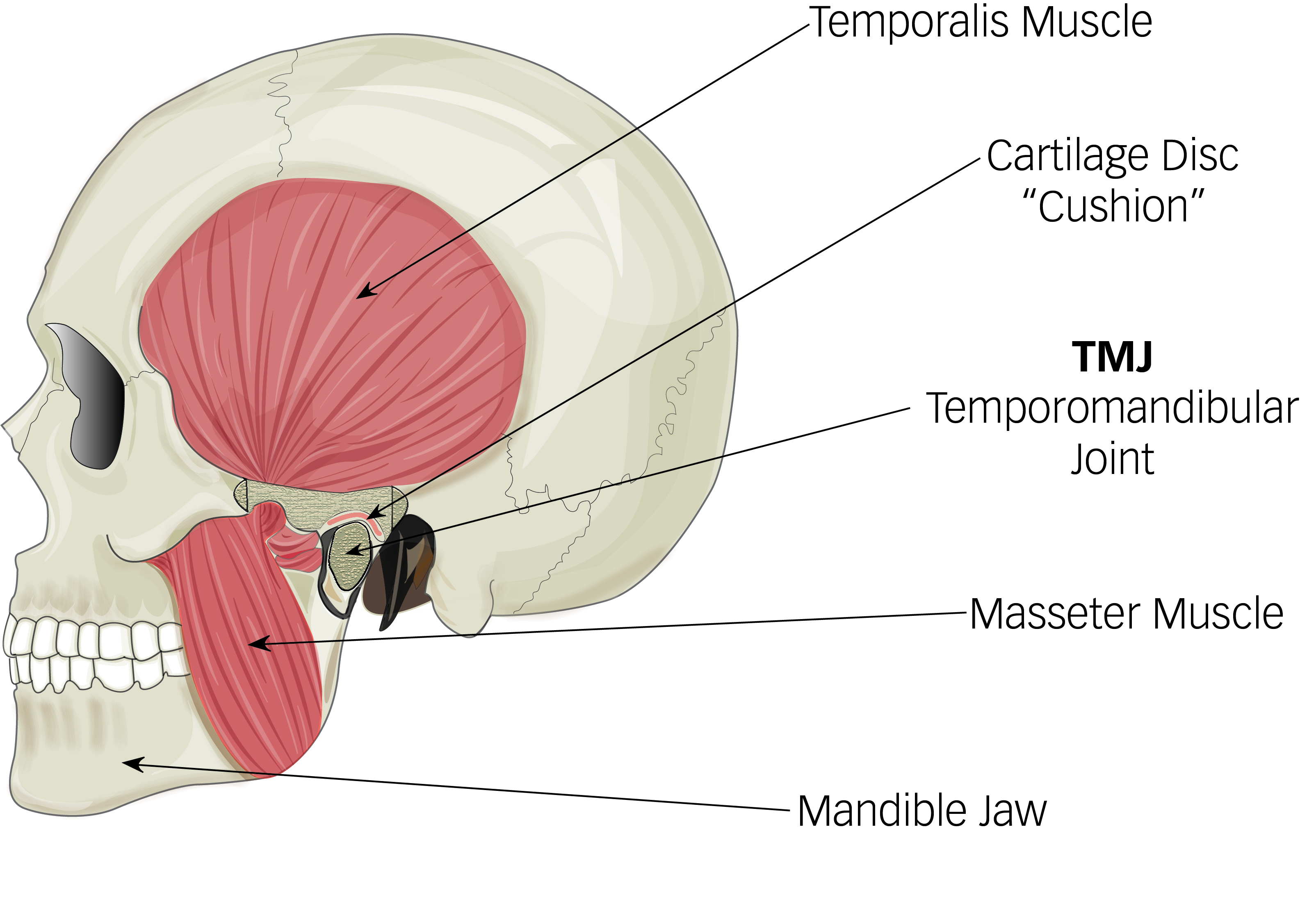Jaw joint problems
Information for patients from the Oral and Maxillofacial Department
Where is the jaw joint?

The temporomandibular joint (jaw joint) is located in front of your ear, where your skull and lower jaw (mandible) meet. The joint allows your lower jaw to move and function.
The joint is made up of two bones that are separated by a disc of cartilage. Ligaments and muscles surround the joint.
What are the symptoms of jaw joint problems?
Problems with the jaw joint are very common but usually only last a few months before getting better. In some cases only the muscles are affected (myofascial pain dysfunction), but in other cases the cartilages and ligaments may also be at fault (internal derangement of temporomandibular joint).
The most common symptoms are:
Joint noise such as clicking, cracking, crunching, grating, or popping.
Pain, usually a dull ache in and around your ear. The pain may radiate (move forwards) along your cheekbone or downwards into your neck.
Headache.
Not being able to open your mouth fully.
Most jaw joint problems are made worse by chewing and are aggravated when you are stressed.
What causes jaw joint problems?
Pain is caused by the muscles in and around your jaw joint tightening up.
Joint noise happens if the disc of cartilage moves out of its normal position between the bones of your jaw joint. Most commonly the cartilage slips forwards and a noise is made when it returns to its normal position in between the bones of your jaw joint. The noise sounds louder to some patients than others because the joint is just in front of your ear.
The ligaments and muscles surrounding the joint can go into spasm, producing pain and limited mouth opening.
Why have I got jaw joint problems?
The cartilage in your jaw is thought to slip forwards because of over-use of the muscles surrounding your jaw. The over-use commonly produces tightening of your muscles and may happen as a result of chewing habits, such as grinding or clenching your teeth when under stress or at night.
Nail biting or holding things between your teeth can also cause jaw joint problems. Less commonly missing back teeth, an uneven bite, or an injury to your jaw can lead to the problem. Often no obvious cause is found.
Are my problems anything to worry about?
Jaw joint problems are usually not serious and do not lead onto other problems such as arthritis of the jaw joint. They are however a nuisance. Fortunately jaw joint problems usually respond to simple treatments.
What are the treatments?
Treatments vary depending on whether you are suffering from myofascial pain dysfunction, internal derangement of the temporomandibular joint, or a combination of both.
On the whole treatment is aimed at trying to reduce the workload of your muscles, allowing the disc of cartilage to return to a normal position in your joint.
A soft diet that needs little chewing allows over-worked muscles to rest.
Painkillers / anti-inflammatory medication (such as ibuprofen) is good. They can be taken as either tablets or applied as a gel to the outside of your joint.
Heat, for example warm water in a hot water bottle (avoiding boiling water) wrapped in a towel placed on the side of your face.
Identifying and stopping any habits, such as clenching or grinding. Remember that these may be subconscious (you may not be aware of them).
Resting the joint as much as possible; try to avoid yawning.
Providing a clear plastic splint (soft bite raising appliance) that fits over your teeth and is worn mainly at night. This helps support the joint and surrounding muscles. For more information, please ask a member of staff for the Trust’s Caring for your soft bite raising appliance (BRA) advice sheet.
Physiotherapy.
Replacing missing teeth to balance your bite. If this is appropriate it will have been discussed with you.
Relaxation therapy and learning ways to control tensions and stress.
Jaw joint exercises will have been discussed with you by your doctor. Please remember to follow them carefully.
You and your doctor will discuss which of these treatment options is best for you.
What happens if these treatments do not work?
If the treatments listed above do not work, therapeutic interventions can be tried but these are only carried out in a small number of cases. These interventions involve the manipulation of your joint whilst you are asleep or more rarely surgery carried out with a mini telescope.
In extreme cases it may be necessary to surgically open your joint and operate on the bones, cartilages, and ligaments.
Are jaw joint problems anything to worry about?
It is important to realise that jaw joint problems, although a nuisance, are not sinister and usually respond to quite simple treatment over a period of time. Patients themselves can manage most of these treatments themselves.
Occasionally jaw joint problems may return after several years. It is very rare for jaw joint problems to progress to arthritis.